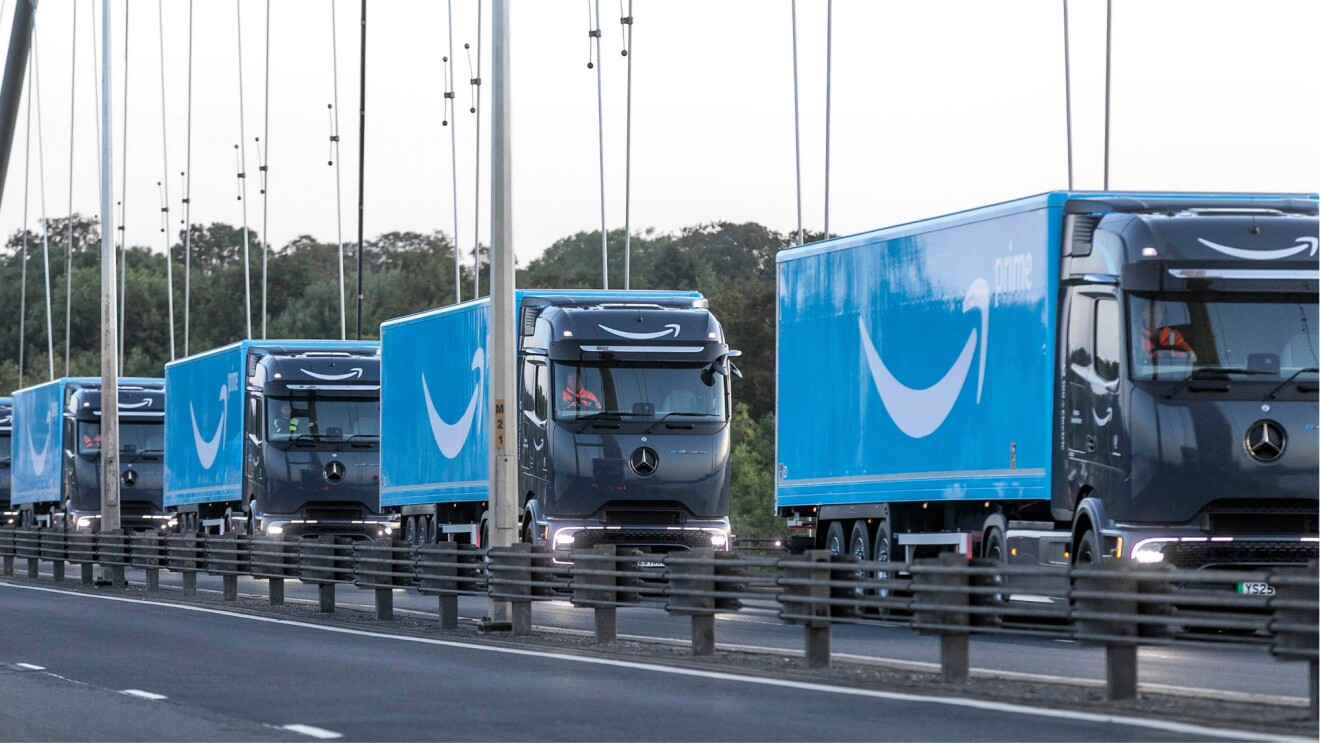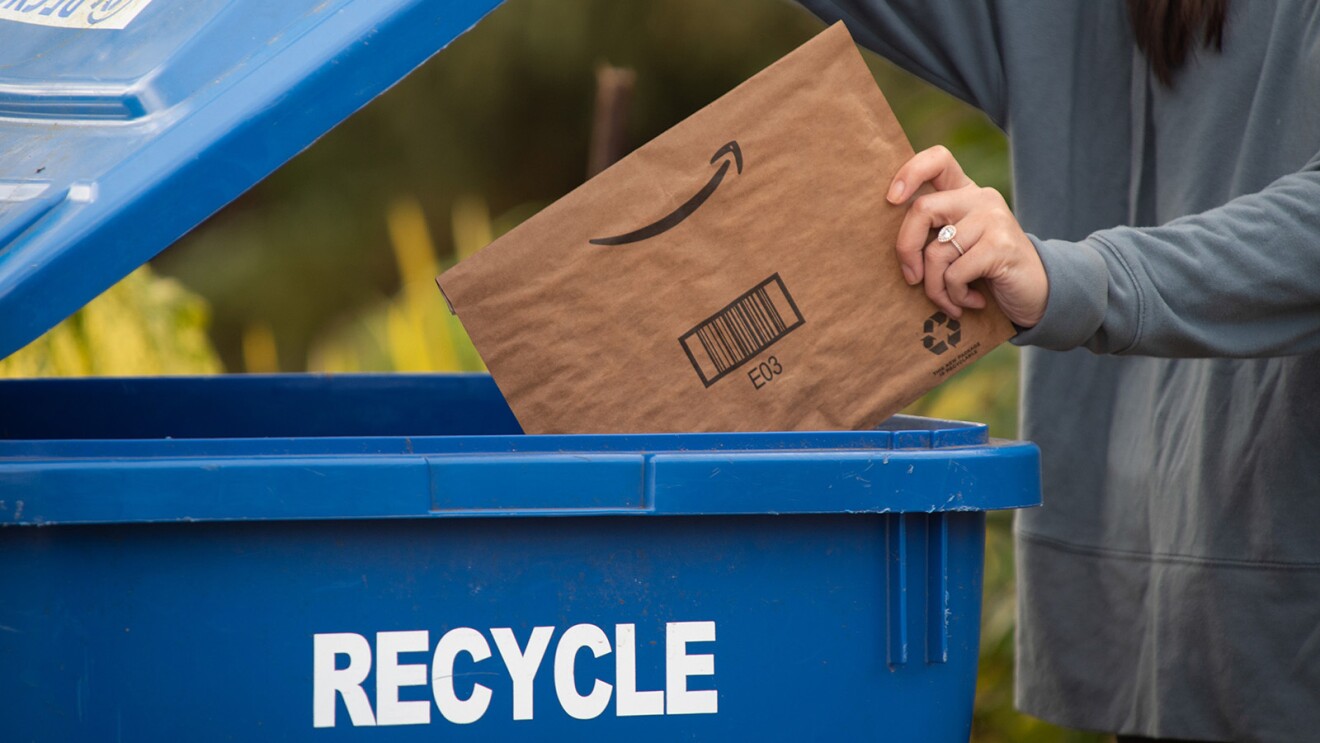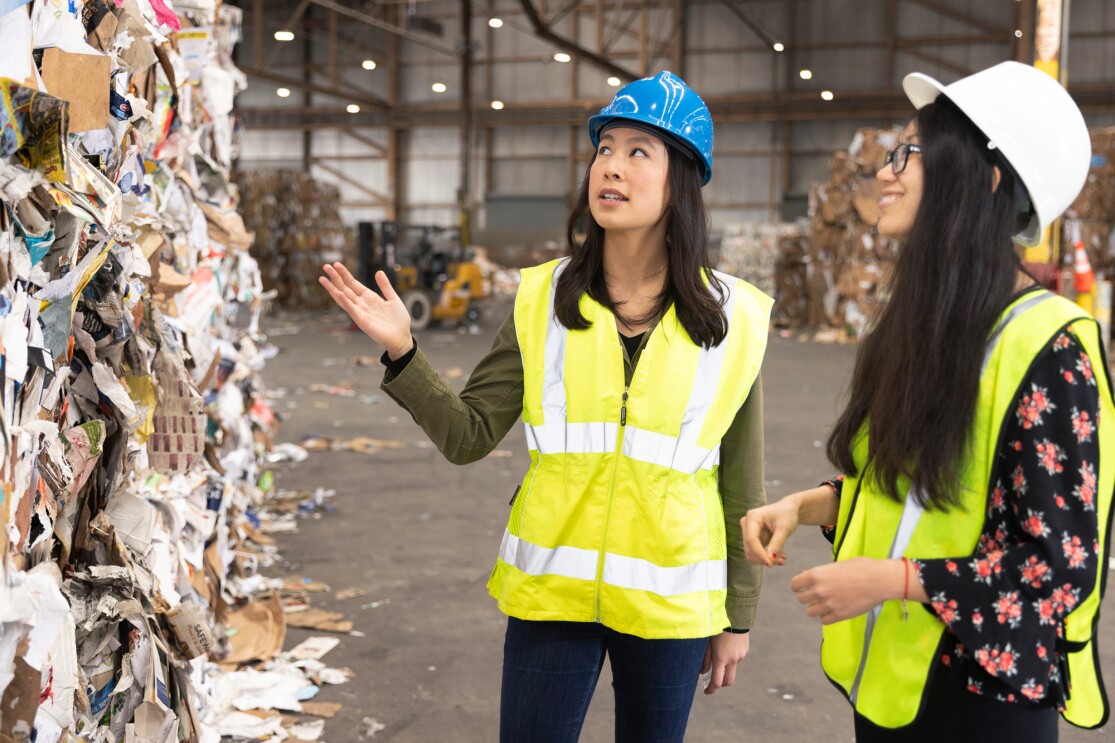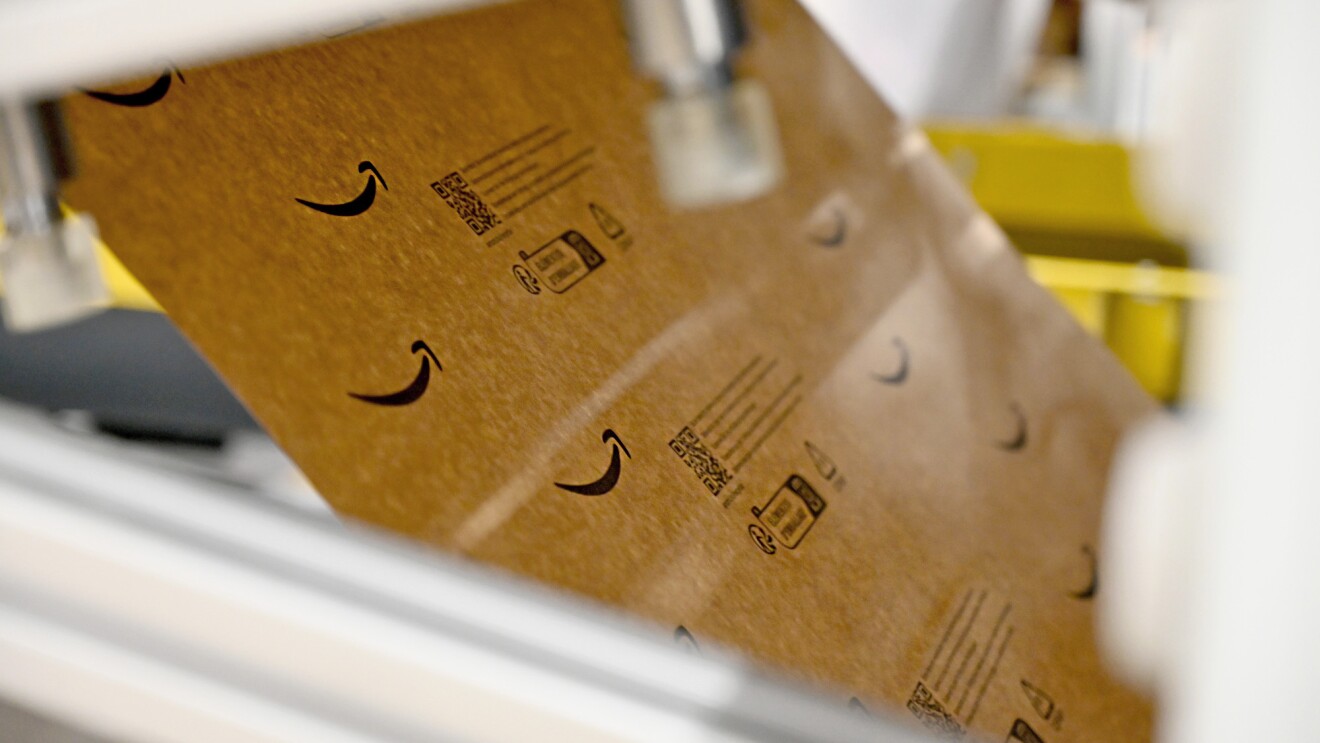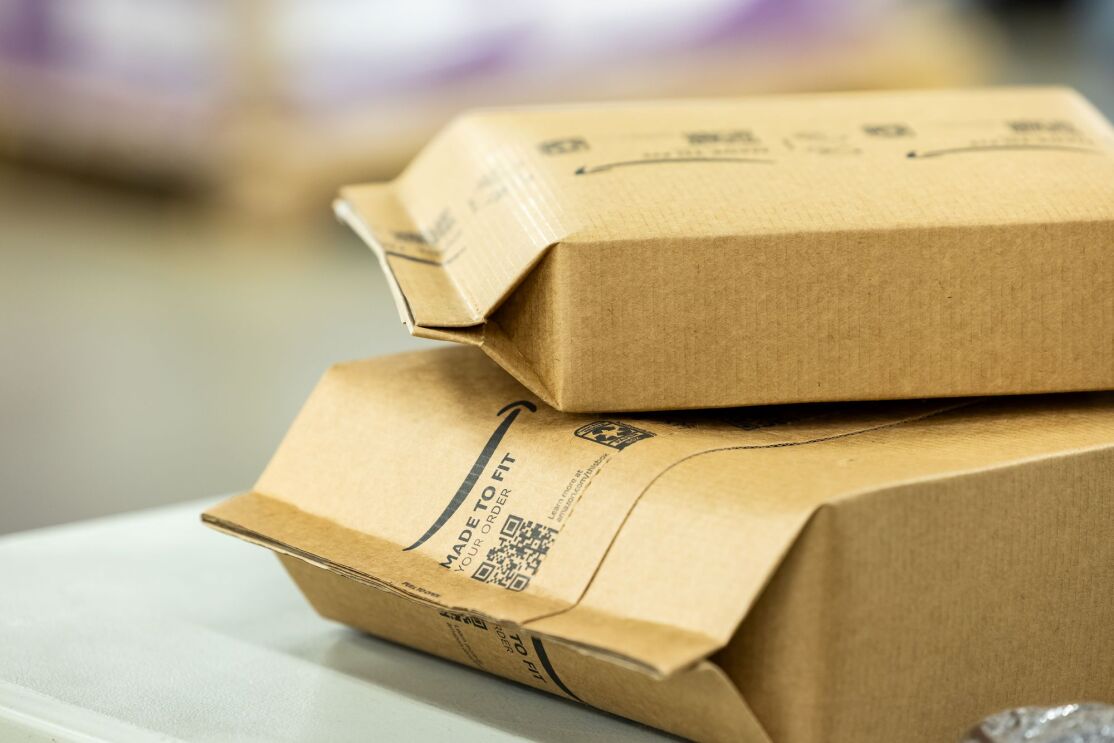Amazon’s transportation network is undergoing an electric revolution.
2025 marks a major milestone in our journey to decarbonise Amazon’s UK transportation network, with the largest-ever order of electric heavy-goods vehicles (eHGVs) now starting to roll out onto UK roads, delivering packages to customers nationwide.
But that’s not all; from new electric delivery vans customised to meet drivers’ needs, to expanding on-foot courier service—now serving four London boroughs—Amazon's transportation network is evolving with both the customers and climate goals in mind.
Let's take a closer look at the electric vehicles (EVs) and more bringing Amazon products to millions of customers across the UK.
Electric heavy-goods vehicles
01 / 02
Amazon’s eHGVs, operated by our carrier partners, transport packages between Amazon fulfilment centres, sort centres, and delivery stations across the UK.
As part of a record-breaking order in January 2025, there will be a total of 160 electric trucks on UK roads once fully deployed, making Britain home to the highest number of eHGVs in Amazon's global transportation network.
The facts:
- Amazon has installed fast charging points at its UK sites that can power the 40-tonne trucks from 20 to 80 per cent battery capacity in just over an hour.
- The electric heavy trucks are expected to cover annual travel distance equivalent to more than 450+ trips around the world on UK roads, carrying more than 300 million products each year.
- The new Mercedes-Benz Truck eActros 600s have a range of over 310 miles (500 km) when fully charged and can transport up to a 22 metric tonne load per journey.
Electric delivery vans

Over 800 new Mercedes-Benz eSprinter vans will arrive in the UK in the coming months and will be deployed for Amazon deliveries. These vans will bring packages to customer’s doors with zero-exhaust emissions.
The facts:
- Amazon worked with Mercedes-Benz to customise the vans based on learnings from drivers and delivery partners.
- The vans feature improved safety elements, ergonomic designs for drivers, and practical delivery enhancements including custom shelving and sliding bulkhead doors for more efficient package handling.
Electric cargo bikes
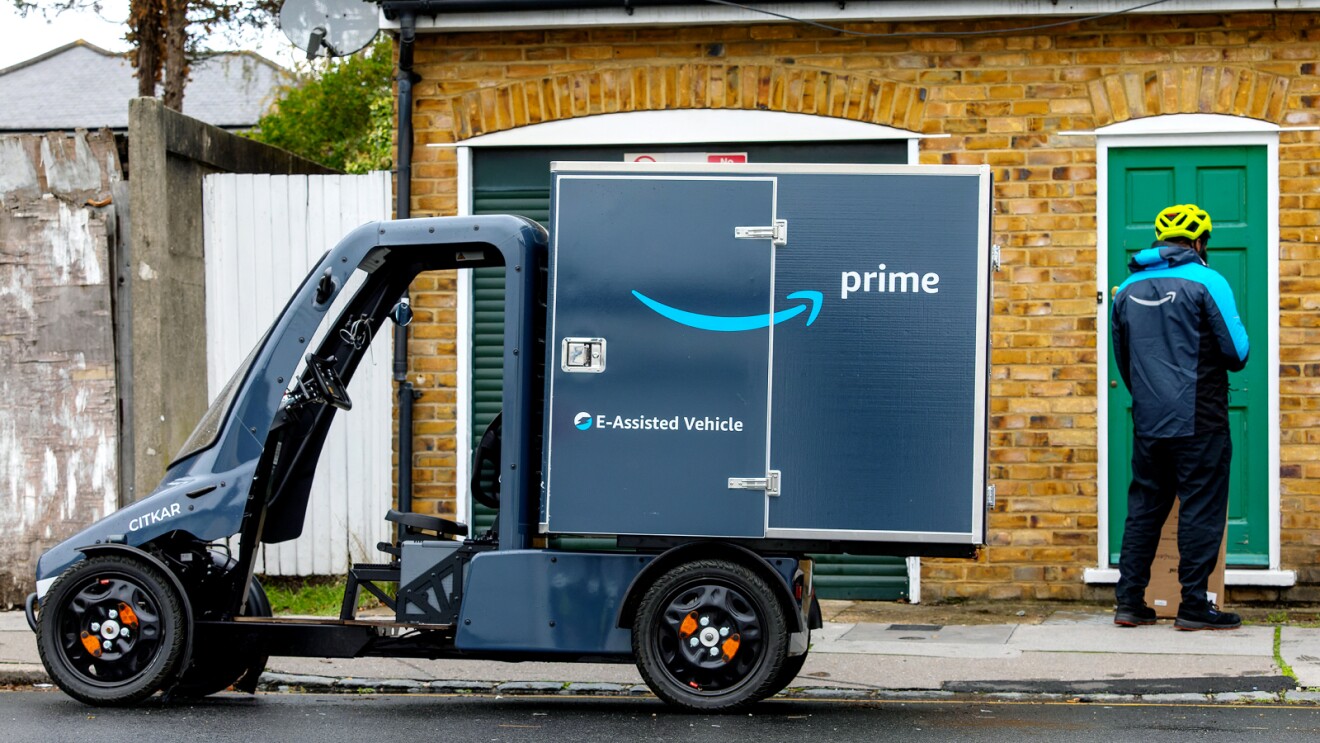
Since 2022, our delivery partners have cycled more than 900,000 miles on electric cargo bikes on routes that would have been otherwise driven by vans with traditional fuel. Amazon currently operates electric cargo bikes across multiple UK cities—including Manchester, London, and Glasgow—alleviating congestion and reducing carbon emissions.
The facts:
- Amazon’s e-bikes can reach a maximum speed of 15mph and travel up to 31 miles per battery charge.
- Each bike can carry up to 200kg of load.
- They can operate without requiring a driver's license and are permitted to use bike lanes.
On-foot deliveries
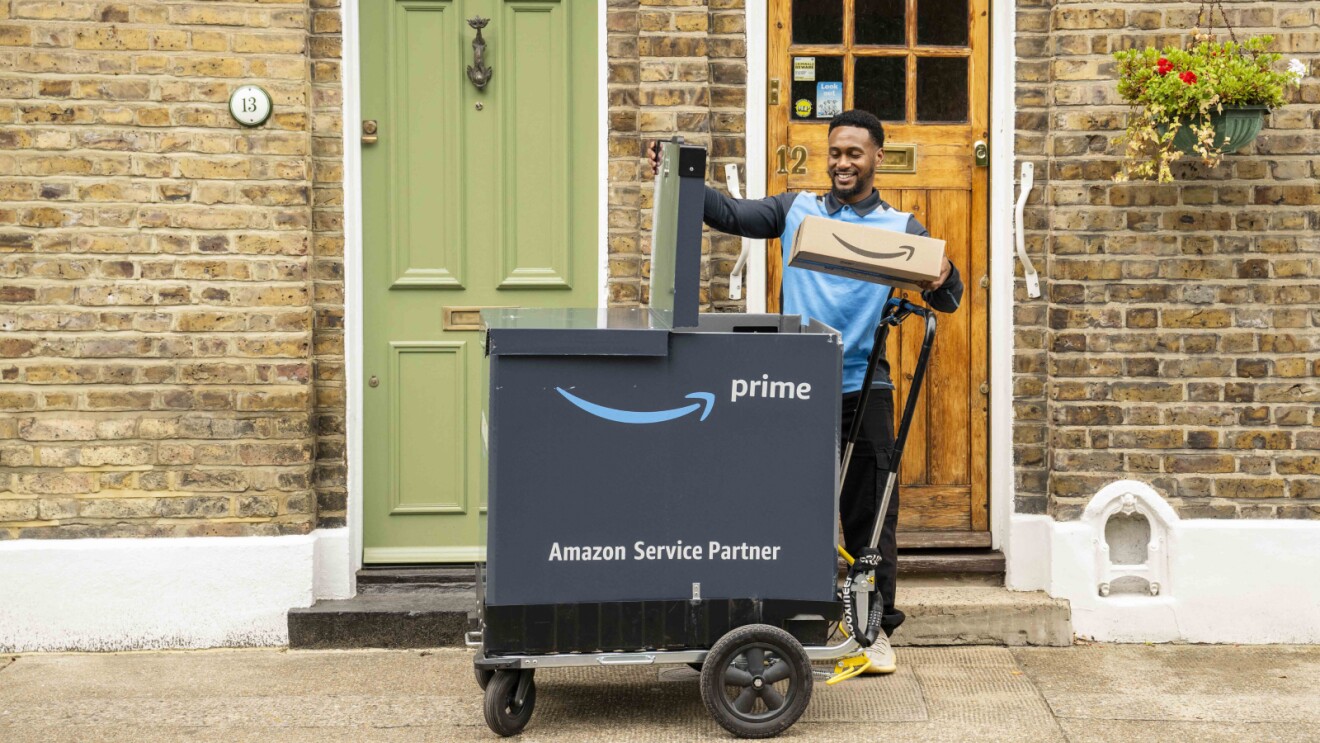
In addition to our electric vehicles, in London Amazon is expanding on-foot delivery services to reduce traffic congestion. Building on successful pilots in Hackney, Westminster, and Islington, Amazon has now also launched operations in Camden.
The facts:
- On-foot delivery associates have already delivered more than one million packages to customers’ doorsteps in 2025.
- Strategically parked vans act as mobile distribution points, from which teams of delivery associates collect packages before following pre-planned routes through nearby neighbourhoods.
The UK’s electric rail network
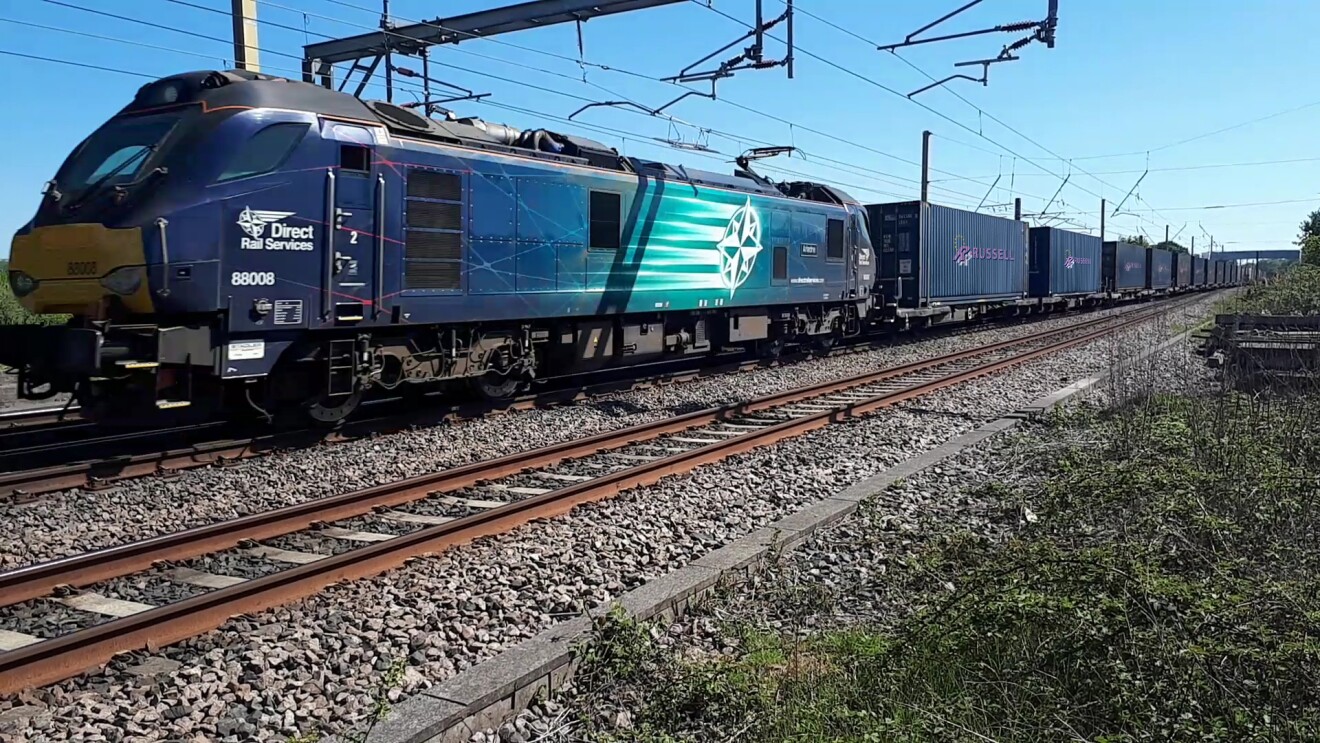
Amazon packages travel by train, too. Products are loaded onto train carriages on the fully electric West Coast Main Line, which runs between Scotland and the Midlands. The products are picked from stations close to local Amazon delivery and fulfilment centres – ready for sorting and packing ahead of customer deliveries.
Supporting infrastructure: EV charging network in the UK
Amazon has already installed fast charging points at its UK sites to support its growing fleet of electric vehicles, but the charging infrastructure nationally is still a challenge.
“These trucks, alongside more electric vans and on-foot deliveries, are a win for our customers, the environment, and our business.” said Nicola Fyfe, EU VP of Amazon Logistics.
“The challenge to scaling this approach across the logistics industry, however, is charging infrastructure. We've invested in our own facilities but need continued industry and government collaboration to develop the national network required for widespread electric vehicle adoption."

